Premium Only Content
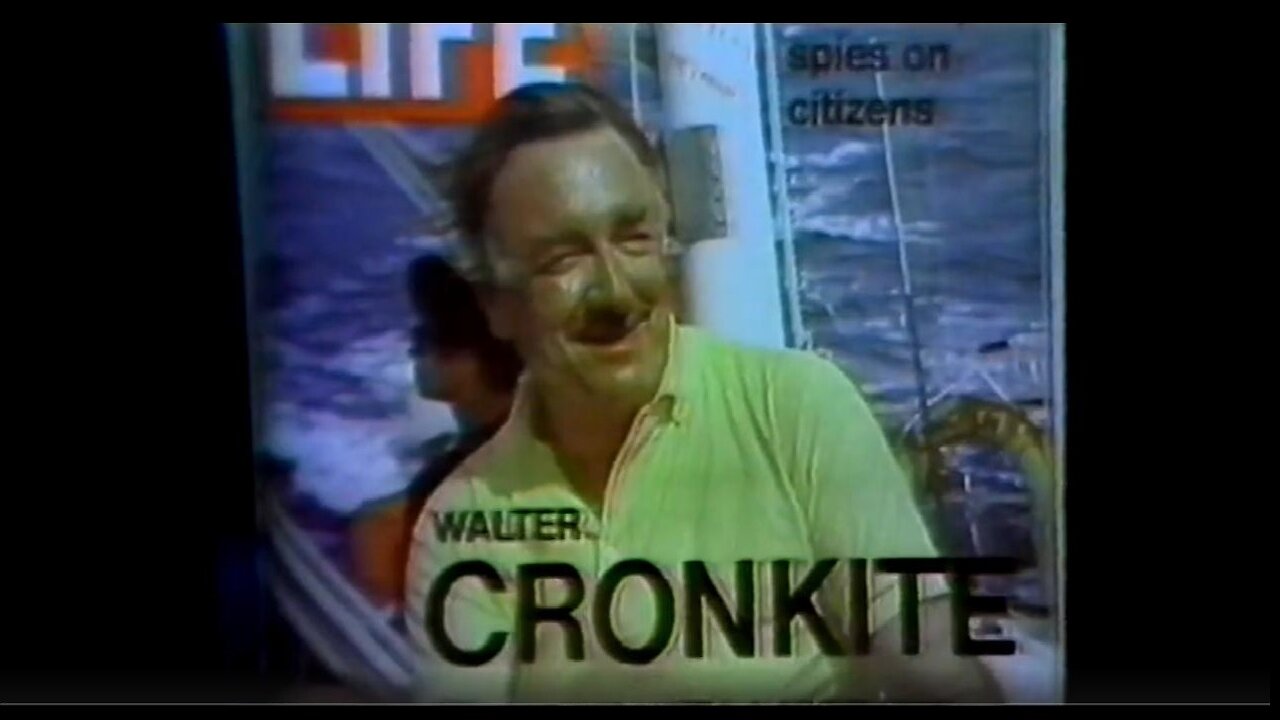
Exposing the CIA: Inside Covert Ops & Government Deceit (Part 1) - The Memory Hole
How the CIA worked with the Mafia to assassinate foreign leaders: https://thememoryhole.substack.com/p/anything-can-come-back-to-haunt-us
How the FBI got corrupted by the Mafia: https://thememoryhole.substack.com/p/working-with-made-men?utm_source=profile&utm_medium=reader2
"ON COMPANY BUSINESS (PART I) " is an extensive and unflinching examination of the Central Intelligence Agency. Allan Francovich's award-winning documentary, crafted over five years of meticulous research, provides a comprehensive overview of the CIA's operations. Delving into the highest echelons of policy-making, front organizations, field operations, and their impact, this film paints a disturbing yet revealing picture of the agency's actions worldwide.
Spanning three hours, the documentary eschews a narrative voice, letting archival footage, interviews, and firsthand accounts speak volumes. Former CIA personnel, including directors and whistleblowers, offer insights into the agency's workings, alongside voices of individuals directly affected by CIA operations.
In its initial part, the film explores the agency's inception, showcasing government officials' manipulations, deceit, and armed interventions in countries like Guatemala and Cuba. It unearths assassination plots against political leaders and illuminates the controversial collaboration between the CIA and the Mafia.
Released in December 1983, this groundbreaking documentary challenges viewers with its dense information and poignant portrayal of the consequences of covert operations. It stands as a powerful testament to the complexities and repercussions of CIA actions, prompting reflection and examination of its role in global affairs.
Salvatore Mooney Giancana[1] (/dʒiɑːnˈkɑːnə/; born Gilormo Giangana;[nb 1] Italian: [dʒiˈlɔrmo dʒaŋˈɡaːna]; May 24, 1908[nb 2] – June 19, 1975) was an American mobster who was boss of the Chicago Outfit from 1957 to 1966.
Giancana was born in Chicago to Italian immigrant parents. He joined the 42 Gang as a teenager, developing a reputation in organized crime, which gained him the notice of the leaders of the Chicago Outfit, which he joined during the late 1930s. From the 1940s through the 1950s, he controlled illegal gambling, illegal liquor distribution, and political rackets in Louisiana. In the early 1940s, Giancana was involved in Chicago's African-American lottery payout system for the Outfit. In 1957, he became the boss of the Chicago Outfit.
According to some sources, Giancana and the Mafia were involved in John F. Kennedy's victory in the 1960 presidential election. During the 1960s, he was recruited by the Central Intelligence Agency (CIA) in a plot to assassinate Cuban leader Fidel Castro. Conspiracy theorists consider Giancana, along with Mafia leaders Santo Trafficante Jr. and Carlos Marcello, to be associated with the assassination of John F. Kennedy. In 1965, Giancana was convicted of contempt of court, serving one year in prison. After his release from prison, Giancana fled to Cuernavaca, Mexico. In 1974, he was deported to the United States, returning to Chicago. Giancana was murdered on June 19, 1975, in Oak Park, Illinois, shortly before he was scheduled to appear before the Church Committee.
Early life
Giancana was born Gilormo Giangana[nb 1] on May 24, 1908,[nb 2] in The Patch neighborhood of Chicago to Antonio Giangana and Antonia DeSimmona,[nb 3] Italian immigrants from Castelvetrano, Sicily, Italy. His father immigrated in 1905, while his mother immigrated in 1906;[7] he had seven siblings.[2] Antonia died in 1910 and his father married Mary Leonardi.[8] On September 23, 1933, Giancana married Angeline DeTolve, the daughter of immigrants from the Italian region of Basilicata. They had three daughters: Antoinette, born 1935; Bonnie, born 1938; and Francine, born 1945.[2] Angeline died on April 23, 1954, leaving him to raise his daughters.[9][2]
Criminal career
Giancana joined the 42 Gang, a juvenile street crew working for political boss Joseph Esposito. The 42 Gang's name was a reference to Ali Baba and the 40 Thieves. They thought they were one better, hence 42. Giancana soon developed a reputation as an excellent getaway driver, a high earner, and a vicious killer. After Esposito's murder, in which Giancana was allegedly involved, the 42 Gang was transformed into a de facto extension of the Chicago Outfit with leaders such as Frank "the Enforcer" Nitti, Paul "the Waiter" Ricca, and Tony "Joe Batters" Accardo. He was first arrested in 1925 for auto theft. He soon graduated to "triggerman" and by the age of 20 had been the prime subject of three murder investigations but never tried for any of them.[10] In 1929, Giancana was convicted of burglary and larceny, and sentenced to one to five years in the Joliet Correctional Center. He was released in 1932 after serving three years and nine months.[11]
During the late 1930s, Giancana became the first 42er to join the Chicago Outfit. From the early 1940s through the 1950s, he controlled most illegal gambling, liquor distribution, and other political rackets in Louisiana through longtime friend H. A. (Hol) Killian. Killian controlled the majority of the liquor license issuance by his associations with longtime New Orleans business associate Carlos Marcello.[citation needed] In 1939, Giancana was convicted of bootlegging and sentenced to four years in Leavenworth Prison and Terre Haute Federal Correctional Complex.[11]
Rise to power
After his release from prison in 1942, Giancana made a name for himself by convincing Accardo, then the Outfit's underboss, to stage a takeover of Chicago's African-American "policy" (lottery) payout system for the Outfit. Giancana's crew is believed to have convinced Eddie Jones to quit his racket and leave the country. Giancana's crew was also responsible for the August 4, 1952 murder of African-American gambling boss Theodore Roe. Jones and Roe were major South Side gambling bosses. Roe had refused to surrender control of his operation as the Outfit had demanded, and on June 19, 1951, Roe fatally shot Leonard "Fat Lennie" Caifano, a made man of Giancana's crew.[12]
The Outfit's South Side "policy"-game takeover was not complete until another Outfit member, Jackie "the Lackey" Cerone, scared "Big Jim" Martin to Mexico with two bullets to the head that did not kill him. When the lottery money started rolling in for the Outfit after this gambling war, the amount this game produced for the Outfit was in the millions of dollars a year, bringing Giancana further notice. It is believed to have been a major factor in his being "anointed" as the Outfit's new boss in 1957. Accardo joined Ricca in semi-retirement, becoming the Outfit's consigliere.[13] However, it was generally understood that Accardo and Ricca still had the real power. Giancana was required to consult Accardo and Ricca on all important Outfit affairs.
Giancana was present at the Mafia's 1957 Apalachin meeting at the Upstate New York estate of Joseph Barbara.[14] Later, Buffalo crime boss Stefano Magaddino and Giancana were overheard on a wiretap saying the meeting should have occurred in the Chicago area. Giancana claimed that the Chicago area was "the safest place in the world" for a major underworld meeting because he had several police chiefs on his payroll. If the syndicate ever wanted to hold a meeting in or around Chicago, Giancana said, they had nothing to fear because they had the area "locked up tight".[15]
Some journalists claimed that Giancana and his Chicago crime syndicate "played a role" in John F. Kennedy's victory in the 1960 presidential election.[16][17]
Hyman Larner was an associate of Giancana's who helped expand the Outfit's gambling and smuggling operations to Panama and Iran,[18] moving the Miami operation's headquarters to Panama where money laundering was more easily facilitated by local banks. These operations were conducted as a partnership between the Mafia and the CIA. By 1966, this partnership had developed into arms smuggling to the Middle East for the Israeli Mossad, all via Panama.[19] Richard Cain, a corrupt police officer, also made "frequent trips" to and from Mexico as Giancana's courier and financial adviser.[20]
Alleged CIA connections
It is widely reputed and was partially corroborated by the Church Committee hearings that during the Kennedy administration, the CIA recruited Giancana and other mobsters to assassinate Fidel Castro. Giancana reportedly said that CIA and the Cosa Nostra were "different sides of the same coin".[21]
Judith Exner claimed to be the mistress of both Giancana and JFK, and that she delivered communications between them about Castro.[22] Giancana's daughter Antoinette has stated that her father was performing a scam to pocket millions of CIA dollars.[23]
Documents released in 1997 revealed that some Mafiosi worked with CIA on assassination attempts against Castro.[24] CIA documents released in 2007 confirmed that in September 1960, the CIA recruited ex-FBI agent Robert Maheu to meet with the West Coast representative of the Chicago mob, Johnny Roselli. When Maheu contacted Roselli, Maheu hid that he was sent by the CIA, instead portraying himself as an advocate for international corporations. He offered $150,000 to have Castro killed, but Roselli refused any pay. Roselli introduced Maheu to two men he called Sam Gold and Joe. "Sam Gold" was Giancana; "Joe" was Santo Trafficante Jr., the Tampa syndicate boss and one of the most powerful mobsters in prerevolution Cuba.[25] Glenn Kessler of The Washington Post explained: "After Fidel Castro led a revolution that toppled the government of Fulgencio Batista in 1959, CIA was desperate to eliminate Castro. So, the agency sought out a partner equally worried about Castro—the Mafia, which had lucrative investments in Cuban casinos."[26]
According to the declassified CIA "Family Jewels" documents, Giancana and Trafficante were contacted in September 1960 about the possibility of an assassination attempt by Maheu after Maheu had contacted Roselli, a Mafia member in Las Vegas and Giancana's number-two man. Maheu had presented himself as a representative of numerous international businesses in Cuba that Castro was expropriating. He offered $150,000 for the "removal" of Castro through this operation, though the documents suggest that neither Roselli, Giancana, nor Trafficante accepted any payment for the job. Giancana suggested using poison pills to dose Castro's food and drink. CIA gave these pills to Giancana's nominee, Juan Orta, whom Giancana presented as a corrupt official in the new Cuban government and who had access to Castro. After six attempts to introduce the poison into Castro's food, Orta abruptly demanded to be relieved of his role in the mission, giving the job to another, unnamed participant. Later, Giancana and Trafficante made a second attempt using Anthony Verona, the commander of the Cuban Exile Junta, who had, according to Trafficante, become "disaffected with the apparent ineffectual progress of the Junta." Verona requested $10,000 in expenses and $1,000 worth of communications equipment. How much work was performed for the second attempt is unknown, as the program was canceled soon after due to the Bay of Pigs invasion in April 1961.[27][28][29]
According to the "Family Jewels", Giancana asked Maheu to wire the room of his then mistress Phyllis McGuire, singer of the McGuire Sisters, whom he suspected of having an affair with comedian Dan Rowan. Although documents suggest Maheu acquiesced, the device was not planted because the agent who had been given the task of planting it was arrested. According to the documents, Robert F. Kennedy prohibited the prosecution of the agent and Maheu, who was soon linked to the wire attempt, at the CIA's request.[29] Giancana and McGuire, who had a long-lasting affair, were originally introduced by Frank Sinatra.[30] According to Antoinette Giancana, during part of the affair, McGuire had a concurrent affair with President Kennedy.[31]
Downfall
When Giancana was called before a grand jury on June 1, 1965, he remained silent despite having been granted immunity, which resulted in his jailing for contempt for more than a year, the duration of the grand jury.[32] Meanwhile, Giancana was deposed as operational boss by Ricca and Accardo, and replaced by Joseph "Joey Doves" Aiuppa.[33]
After his release from prison in 1966, Giancana fled to Cuernavaca, Mexico, to avoid further grand jury questioning.[34][35] He was arrested by Mexican authorities on July 19, 1974, and deported to the United States.[34][35] He arrived back in Chicago on July 21, 1974.[36]
Death
Giancana mausoleum at Mount Carmel Cemetery
After Giancana's return to the United States, police detailed officers to guard his house in Oak Park, Illinois, but on the night of June 19, 1975, shortly before he was scheduled to appear before the Church Committee,[37] which was investigating CIA and Cosa Nostra collusion,[38] a gunman entered the home through the basement and shot Giancana in the head and neck seven times with a .22 caliber pistol. At around 11 p.m., Joseph DiPersio, Giancana's caretaker, found his body on the floor of the basement kitchen where he was said to be frying sausage and peppers.[39][40] A week before his death, Giancana had gall bladder surgery in Houston.[39] Giancana was interred next to his wife, Angeline, in a family mausoleum at Mount Carmel Cemetery, in Hillside, Illinois.
Within days of Giancana's murder, Michael J. Corbitt, the police chief of Willow Springs, Illinois, and a mobster associate, was told by Chicago Outfit's capo Salvatore Bastone that "Sam sure loved that little guy in Oak Park... Tony Spilotro. Yeah, he was fuckin' crazy about him. Sam put Tony on the fuckin' map, thought he was gonna be a big fuckin' man someday. Did you know that after Marshall Caifano got out of Vegas, it was Sam who wanted Tony Spilotro out there? Even lately, with all the problems with the skim and all, Sam always stood behind the guy. Tony was over to Sam's house all the time. He lived right by there. Did you know Tony even figured out a way where he could get in through the back of Sam's place without anybody seeing him? He'd go through other people's yards, go over fences, all sorts of shit."[41] When Corbitt asked for the reason for the murder, Bastone quipped, "There's never just one reason for shit like what happened to Sam. There's a million of 'em. Let's just say that Sam should've remembered what happened to Bugsy Siegel."[41]
Other theories
Although longtime associate Dominic "Butch" Blasi was with Giancana the night he was murdered and questioned by police as a suspect, neither the FBI nor Antoinette Giancana considers him Giancana's killer.[42][43] Hitman Nicholas Calabrese told the FBI during the 2000s that he knew that Tony Accardo was part of the killing and Angelo LaPietra got rid of the gun which used a suppressor made by Frank Calabrese Sr. and Ronnie Jarret.[44]
Another theory is that Santo Trafficante Jr. ordered Giancana's murder due to fears he would testify about the Mafia's involvement in CIA plots to kill Castro. Although Trafficante would have needed permission from Outfit bosses Accardo and Joseph Aiuppa, Giancana's murder coincided with the discovery of the decomposing remains of Johnny Roselli in an oil drum floating off Miami; he had been shot and chopped up before being dumped in the sea. Some suspected that Roselli was killed on Trafficante's orders.[45]
There were rumors that the CIA may have killed Giancana because of his links to the Agency.[citation needed]. Former CIA Director William Colby said, "We had nothing to do with it."[46] John Whitten mentioned during the Scelso deposition that he suspected William Harvey, a CIA assassin who was in the area.
In popular culture - Movies:
Giancana played a major role in the J. X. Williams movie Peep Show (1965).
The TV film Mafia Princess (1986) starring Tony Curtis as Giancana.
News footage of Giancana is featured in the movie JFK (1991).
Carmine Caridi played Giancana in the movie Ruby (1992).
The HBO made-for-TV movie Sugartime (1995) depicts Giancana's relationship with singer Phyllis McGuire with Giancana played by John Turturro.
Robert Miranda played Giancana in the television movie The Rat Pack (1998).
Peter Friedman played Giancana in the movie Power and Beauty (2002).
In the movie The Good Shepherd (2006), the character played by Joe Pesci, Joseph Palmi, was a mix of several mobsters, including Giancana, Santo Trafficante Jr., and Carlos Marcello, who were involved with the CIA's operation Family Jewels. Matt Damon's character, Edward Wilson, is depicted proposing that Palmi assist in assassinating Castro.
Al Linea plays Giancana in the movie The Irishman (2019).
Television:
Giancana features in the first episode of the documentary series Mafia's Greatest Hits, on the UK history TV channel Yesterday.[47]
Rod Steiger portrayed Giancana in the TV miniseries Sinatra (1992).
Serge Houde portrays Giancana as a major nemesis of the Kennedy family in the television miniseries The Kennedys (2011).
The character Mob Man (uncredited) from The X-Files episode "Musings of a Cigarette Smoking Man", who is present at a planning meeting on the assassination of JFK, is likely based on Giancana.
Giancana is portrayed by Emmett Skilton in the 8-part AMC television miniseries The Making of the Mob: Chicago (2016).
Giancana's image is included in the opening credits of the Starz TV series Magic City (2012–13).
Giancana is seen and referenced at a Las Vegas casino in the TV series Timeless in the episode Atomic City (2016).
Literature:
Giancana is a major character in Max Allan Collins's novels Chicago Confidential and Road to Paradise.
Giancana plays a major role in James Ellroy's fiction, most notably American Tabloid and its sequels The Cold Six Thousand and Blood's a Rover.
Giancana is the subject of the biography Mafia Princess, written by his daughter Antoinette.
Giancana is a character in Robert J. Randisi's Rat Pack novels.[citation needed]
Giancana is a notable character in Norman Mailer's 1991 historical fiction Harlot's Ghost.
The book Double Cross: The Explosive, Inside Story of the Mobster Who Controlled America tells the story of Giancana's life. Written by his brother Chuck Giancana, and his godson and namesake Sam Giancana, the book includes revelations about the deaths of JFK, Marilyn Monroe, and RFK.[48]
Giancana is mentioned in Charles Brandt's narrative nonfiction book I Heard You Paint Houses (2004).
The fictional character Louie Russo in Mark Winegardner's 2004 novel The Godfather Returns may be based on Giancana.
Giancana is a character in Robert Littell's 2002 CIA novel The Company.
The fictional character "Sam" in Steve Peters and Kay Stephens's novel The Outlaw Sandra Love (2013)[49] is based on Giancana.[citation needed]
In the 2013 novel The Outlaw, the protagonist Sandra Love is said to have had a four-year relationship with a man named Sam, the head of the Chicago Outfit during the early 1960s.
Music:
Influential rapper Kool G Rap once stated that the "G" in his name stands for Giancana. Kool G Rap released an album called The Giancana Story (2002).
Giancana may be mentioned in the Shyne song "Edge", on his second album, Godfather Buried Alive. "Fuck comma rap's, Sam Giancana", although this is sometimes rendered as "same G and canna".
Giancana is mentioned in the song "Dope money" by The Lox ("Bring Drama 'cause Giancana got Kennedy Killed") on the album Ryde or Die Vol. 1.
See also:
List of organized crime killings in Illinois
List of unsolved murders
Notes:
Gilormo Giangana is the birth name according to the Chicago Bureau of Vital Statistics, Birth Certificate Number 5915,[2][3] however, Momo Salvatore Giancana (Italian: [ˈmɔːmo salvaˈtoːre dʒaŋˈkaːna]) is the birth name according to Birth Register Certificate Number 1191.[2]
May 24, 1908, is the birth date according to the Chicago Bureau of Vital Statistics, Birth Certificate Number 5915,[4] however, June 15, 1908, is the birth date according to Birth Register Certificate Number 1191, and the birth date Giancana celebrated.[5][2]
Antonino Giangana and Antonia DiSimonna are the names according to the Chicago Bureau of Vital Statistics, Birth Certificate Number 5915,[2][6] however, Antonio Giancana and Antonia DiSimone, are the names according to Birth Register Certificate Number 1191.[2]
References:
Giancana, Sam; Giancana, Chuck; Giancana, Bettina (March 20, 1992). Double Cross: The Explosive, Inside Story of the Mobster Who Controlled America. p. 242. ISBN 9780446516242. "We want name our son after you... Samuel Mooney Giancana."
"Sam Giancana" (PDF). Federal Bureau of Investigation. September 12, 1960. Archived from the original (PDF) on December 27, 2020. Retrieved June 9, 2020.
Giancana, Antoinette; Renner, Thomas C. (1984). Mafia Princess: Growing Up in Sam Giancana's Family. Morrow. p. 30. ISBN 0-380-69849-8.
Giancana, Antoinette; Renner, Thomas C. (1984). Mafia Princess: Growing Up in Sam Giancana's Family. Morrow. p. 30. ISBN 0-380-69849-8.
Giancana, Antoinette; Renner, Thomas C. (1984). Mafia Princess: Growing Up in Sam Giancana's Family. Morrow. ISBN 0-380-69849-8.
Giancana, Antoinette; Renner, Thomas C. (1984). Mafia Princess: Growing Up in Sam Giancana's Family. Morrow. p. 30. ISBN 0-380-69849-8.
Giancana, Antoinette; Renner, Thomas C. (1984). Mafia Princess: Growing Up in Sam Giancana's Family. Morrow. ISBN 0-380-69849-8.
Giancana, Antoinette; Renner, Thomas C. (1984). Mafia Princess: Growing Up in Sam Giancana's Family. Morrow. ISBN 0-380-69849-8.
Giancana, Antoinette; Renner, Thomas C. (1984). Mafia Princess: Growing Up in Sam Giancana's Family. Morrow. ISBN 0-380-69849-8.
"Sam Giancana on Biography.com". biography.com. Archived from the original on April 10, 2019. Retrieved May 24, 2017.
Congress, United States (1960). Reports and Documents, Volume 27. p. 816. Retrieved June 15, 2020 – via Google Books. "Investigator Salinger testified to Giancana's criminal record: In 1929 he was convicted of burglary-larceny, and sentenced to 1 to 5 years in the Joliet Penitentiary. In 1939, he was convicted of conspiracy to violate the Internal Revenue laws related to liquor and was sentenced to 4 years and fined $2,700. He served, of that 4-year-sentence, 3 years and 2 months in Leavenworth and Terre Haute Federal Penitentiaries."
Chepesiuk, Ron (2007). Black Gangsters of Chicago. Barricade Books. p. 95. ISBN 9781569803318.
Roemer, William F. Jr. (1995). Accardo: The Genuine Godfather. D.I. Fine. pp. 125–129. ISBN 978-1-55611-467-0.
Giancana, Antoinette; Renner, Thomas C. (1984). Mafia Princess: Growing Up in Sam Giancana's Family. Morrow. pp. 190–195–197. ISBN 0-380-69849-8.
Sifakis, Carl (1987). The Mafia Encyclopedia. New York City: Facts on File. ISBN 0-8160-1856-1. Retrieved March 17, 2020.
Greenberg, David (October 16, 2000). "Was Nixon Robbed?". Slate. Archived from the original on September 8, 2011. Retrieved March 17, 2020.
"Sinatra was 'go-between for Mafia and JFK'". The Guardian. October 7, 2000. Archived from the original on April 15, 2018. Retrieved April 16, 2018.
Gibson, Ray (February 18, 2003). "'Double' life: Dealing with the mob, CIA". Chicago Tribune. Archived from the original on November 7, 2018. Retrieved June 8, 2020.
Giancana 2004, pp. 113–115
"Cain played mob game and lost big". Chicago Tribune. December 21, 1973. pp. 1–8.
Giancana, Sam; Giancana, Chuck; Giancana, Bettina (March 20, 1992). Double Cross: The Explosive, Inside Story of the Mobster Who Controlled America. p. 215. ISBN 9780446516242.
O'Brien, Michael (December 1, 1999). "The Exner File. (Judith Campbell Exner, John F. Kennedy's mistress)". Washington Monthly. Archived from the original on March 11, 2008. Retrieved March 17, 2020.
Television documentary Mafia Women, Discovery Channel:
"CIA offered mafia $150,000 to kill Castro". 1997. Retrieved June 15, 2020. "The CIA offered $150,000 to have Cuban leader Fidel Castro assassinated in the early 1960s, but the mob insisted on taking the job for free, according to a newly declassified document."
"MEMORANDUM FOR: Director of Central Intelligence; SUBJECT: ROSELLI, Johnny" (PDF). The New York Times. June 26, 2007. Retrieved March 17, 2020. "he agreed to introduce him a friend, Sam Gold, who knew the "Cuban crowd". Roselli made it clear he did not want any money for his part and believed Sam would feel the same way. Neither of these individuals was ever paid out of Augency funds. During the week of September 25, Maheu was introduced to Sam who was staying at the Fontainebleau Hotel, Miami Beach. It was several weeks after his meeting with Sam and Joe, [...] They were identified as Momo Salvatore Giancana and Santos Trafficant, respectively."
Kessler, Glenn (June 27, 2007). "Trying to Kill Fidel Castro". The Washington Post. Washington, D.C. Archived from the original on October 28, 2013. Retrieved May 23, 2013.
Holland, Steve; Sullivan, Andy (June 26, 2007). "CIA tried to get Mafia to kill Castro". Reuters. Archived from the original on April 29, 2008. Retrieved March 17, 2020.
Blanton, Thomas (June 26, 2007). ""Family Jewels" Archive". National Security Archive. Archived from the original on May 3, 2008. Retrieved March 17, 2020.
Johnson, M. Alex (June 27, 2006). "CIA opens the book on a shady past Declassified 'family jewels' detail assassination plots, break-ins, wiretaps". NBC News. Archived from the original on October 27, 2017. Retrieved March 17, 2020.
Giancana, Antoinette; Renner, Thomas C. (1984). Mafia Princess: Growing Up in Sam Giancana's Family. Morrow. pp. 259–284, 287–293, 347–348. ISBN 0-380-69849-8.
Giancana, Antoinette; Renner, Thomas C. (1984). Mafia Princess: Growing Up in Sam Giancana's Family. Morrow. p. 179. ISBN 0-380-69849-8.
"In Re Grand Jury Investigation of Sam Giancana, Appellant.in the Matter of the Application for Writ of Habeas Corpus, Sam Giancana, Appellant, v. United States of America, Appellee, 352 F.2d 921 (7th Cir. 1965)". US Law, Case Law, Codes, Statutes & Regulations. October 8, 1965. Archived from the original on September 12, 2015. Retrieved March 17, 2020. "Sam Giancana has appealed, in case No. 15178, from an order of the district court entered June 1, 1965, adjudging him in contempt of court for failure to obey an order of that court dated June 1, 1965, and he has also appealed, in case No. 15179, from an order of that court entered June 2, 1965, denying his petition for a writ of habeas corpus."
Sifakis, Carl (2005). The Mafia Encyclopedia. Infobase Publishing. p. 6. ISBN 978-0-8160-6989-7.
"Crime boss' death linked to his discomfiture to mob". The Spokesman-Review. Vol. 93, no. 38. Spokane, Washington. June 21, 1975. p. 16. Archived from the original on January 25, 2016. Retrieved October 30, 2015. "After his release from prison, Giancana stepped down and left Chicago's mob in the hands of his former boss, Accardo, himself going into self-imposed exile in Cuernavaca, Mexico to avoid more grand jury questioning. [...] In July 19, 1974, Mexican police ended his fling, grabbing the pajamlad Giancana while he tended his tomatoes plants They dumped across the orders of the FBI agents (LAT-WP)"
Glionna, John M. (November 21, 2014). "Sam Giancana's daughter aims to cash in on gangster's memorabilia". Los Angeles Times. Archived from the original on November 21, 2014. Retrieved October 30, 2014. "Giancana lived most of his final years in Mexico, on the lam from federal authorities, but was deported back to the U.S. in 1974."
Michael Branigan (2011). A History of Chicago's O'Hare Airport. The History Press. pp. 134. ISBN 978-1-60949-434-6. Archived from the original on January 25, 2016. Retrieved January 1, 2016.
Cronkite, Walter; Lovejoy, Sharron; Schorr, Daniel (June 20, 1975). "GIANCANA KILLED". CBS News.
Safire, William (December 31, 1975). "Murder Most Foul". The Times-News. Archived from the original on March 7, 2016. Retrieved January 1, 2016.
King, Seth S. (June 21, 1975). "Giancana, Gangster, Slain; Tied to C.I.A. Castro Plot". The New York Times. p. 1. Retrieved June 15, 2020. "According to the Oak Park police, Joseph DiPersio, the caretaker, [...] went to the basement, he found the gangster lying face up in a pool of blood on the floor of the kitchen. Six .22‐caliber shell cases were found near the body. [...] Recently he underwent gall bladder surgery at the Methodist Hospital in Houston. The authorities said that he returned to Chicago only this week."
Goudie, Chuck (June 20, 2015). "ABC7 I-Team: Chicago mobster Sam Giancana's 40-year-old murder still a mystery". abc7chicago.com. Archived from the original on April 22, 2018. Retrieved June 8, 2020. "On June 19, 1975, Giancana invited a friend in his home for sausage and peppers. Before the meat was done, that man would become Giancana's killer. The 67-year-old top hoodlum was shot in the head and neck as he fried up the evening snack, seven shots fired from a silencer-equipped .22 caliber pistol."
Corbitt, Michael J. (2003). Double Deal: The Inside Story of Murder, Unbridled Corruption, and the Cop who was a Mobster. p. 196. ISBN 9780060195854. Retrieved June 15, 2020.
Giancana, Antoinette; Renner, Thomas C. (1984). Mafia Princess: Growing Up in Sam Giancana's Family. Morrow. p. 367. ISBN 0-380-69849-8.
Congress 1983, p. 182
Family Secrets: The Case That Crippled the Chicago Mob:
C., G. (August 23, 1976). "Deep Six for Johnny" (PDF). Time. pp. 23–25. Archived (PDF) from the original on March 4, 2016. Retrieved February 27, 2018. "Alameda Fratianno was Roselli's protégé because Roselli introduced Fratianno to the NY mob, and so Roselli was responsible for Fratianno's actions and because Fratianno was an informant, Roselli's death could have been a consequence of Fratianno's informing."
Godwin, John (1978). Murder U.S.A.: The Ways We Kill Each Other. Ballantine Books. p. 145. ISBN 978-0-345-27721-3.
"Mafia's Greatest Hits (series 1)". televisioncatchup.co.uk. Archived from the original on June 18, 2015. Retrieved June 17, 2015.
Giancana, Sam; Giancana, Chuck; Giancana, Bettina (March 20, 1992). Double Cross: The Explosive, Inside Story of the Mobster Who Controlled America. Grand Central Publishing. ISBN 9780446516242. Retrieved March 17, 2020.
Peters, Steve (2013). The Outlaw Sandra Love. Star Hill Publishing. ISBN 9780615760315. Archived from the original on January 6, 2019. Retrieved March 17, 2020.
Further reading:
Giancana, Sam; Giancana, Chuck; Giancana, Bettina (March 20, 1992). Double Cross: The Explosive, Inside Story of the Mobster Who Controlled America. ISBN 9780446516242. Retrieved March 17, 2020.
Giancana, Antoinette; Renner, Thomas C. (1984). Mafia Princess: Growing Up in Sam Giancana's Family. Morrow. ISBN 0-380-69849-8. Retrieved March 17, 2020.
Godwin, John (1978). Murder U.S.A.: The Ways We Kill Each Other. Ballantine Books. ISBN 978-0-345-27721-3. Retrieved March 17, 2020.
Roemer, William F. Jr. (1995). Accardo: The Genuine Godfather. D.I. Fine. ISBN 978-1-55611-467-0. Retrieved March 17, 2020.
Organized Crime in Chicago: Hearing Before the Permanent Subcommittee on Investigations of the Committee on Governmental Affairs, United States Senate, Ninety-eighth Congress, First Session, March 4, 1983. U.S. Government Printing Office. March 4, 1983. Retrieved March 17, 2020.
Brashler, William (1977). The Don: The Life and Death of Sam Giancana. New York: Harper and Row. ISBN 0-06-010447-3.
Cain, Michael J. (2007). The Tangled Web. New York: Skyhorse Publishing. ISBN 978-1-60239-044-7.
Dark, Tony (2004). The FBI Files Sam Giancana. Chicago: H H Productions. ISBN 0-615-12720-7.
Hersh, Seymour M. (1997). Dark Side of Camelot. New York: Little, Brown and Company. ISBN 0-316-35955-6.
Inserra, Vincent L. (2014). C-1 and the Chicago Mob. Xlibris. ISBN 978-1-4931-8278-7.[self-published source]
Morgan, John M. (1985). Prince of Crime. New York: Stein and Day. ISBN 0-8128-8297-0.
Nash, Jay Robert (1973). Bloodletters and Badmen. New York: M. Evans & Co. ISBN 0-87131-777-X.
Sifakis, Carl (1982). Encyclopedia of Crime. New York: Facts On File. ISBN 0-8160-5694-3.
Talbot, David (2007). Brothers: The Hidden History of the Kennedy Years. Free Press. ISBN 978-0-7432-6918-6.
Thompson, Nathan (2003). Kings: The True Story of Chicago's Policy Kings and Numbers Racketeers: an Informal History. The Bronzeville Press. ISBN 0-9724875-0-6.
Zion, Sidney (1994). Loyalty and Betrayal: The Story of the American Mob. San Francisco: Collins Publishers. ISBN 0-00-638271-1.
VIDEO SOURCE:
Source: https://rumble.com/v3y1xyp-exposing-the-cia-inside-covert-operations-and-government-deceit-part-1.html?e9s=rel_v1_b
-
 2:40
2:40
Truths Unlimited
5 hours agoOn a lighter note... "A Trump Trilogy" 🎶 Mix by @magical_trevor
790 -
 LIVE
LIVE
Kim Iversen
4 hours agoLuigi Mangione Charged With TERRORISM | Liz Cheney Accused Of WITNESS TAMPERING, Faces 20 YEARS IN JAIL
2,879 watching -
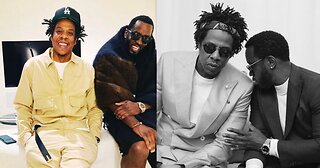 LIVE
LIVE
Akademiks
5 hours agoJay Z says he aint NEVER been friends w/ DIDDY! Bhad Bhabie lost her man? Travis Hunter Down Bad?
4,355 watching -
 2:27:04
2:27:04
AirCondaTv Gaming
3 hours ago $2.69 earnedWar Thunder - Tankering Around for That 10 Bomb
15.5K4 -
 4:19:05
4:19:05
SpartakusLIVE
6 hours agoThe MACHINE locks in for 12-hour POWER stream
12.1K1 -
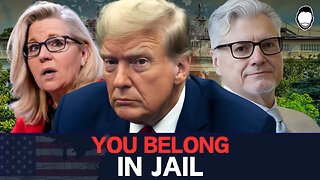 1:58:40
1:58:40
Robert Gouveia
5 hours agoJ6 Coverup: Prosecute LIZ CHENEY; NY Judge REJECTS Immunity; Trump Breaks Gag?
50.7K38 -
 2:22:06
2:22:06
WeAreChange
4 hours agoPSYOP Spreads: Drones Shut Down Airport In New York!
39.5K16 -
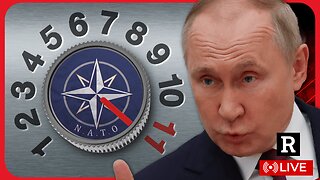 1:31:18
1:31:18
Redacted News
6 hours agoEMERGENCY! NATO AND CIA ASSASSINATE TOP RUSSIAN GENERAL, PUTIN VOWS IMMEDIATE RETALIATION | Redacted
183K241 -
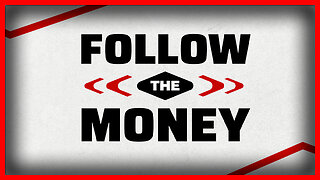 56:45
56:45
VSiNLive
5 hours ago $4.64 earnedFollow the Money with Mitch Moss & Pauly Howard | Hour 1
51.6K2 -
 52:44
52:44
Candace Show Podcast
5 hours agoMy Conversation with Only Fans Model Lilly Phillips | Candace Ep 122
63K244